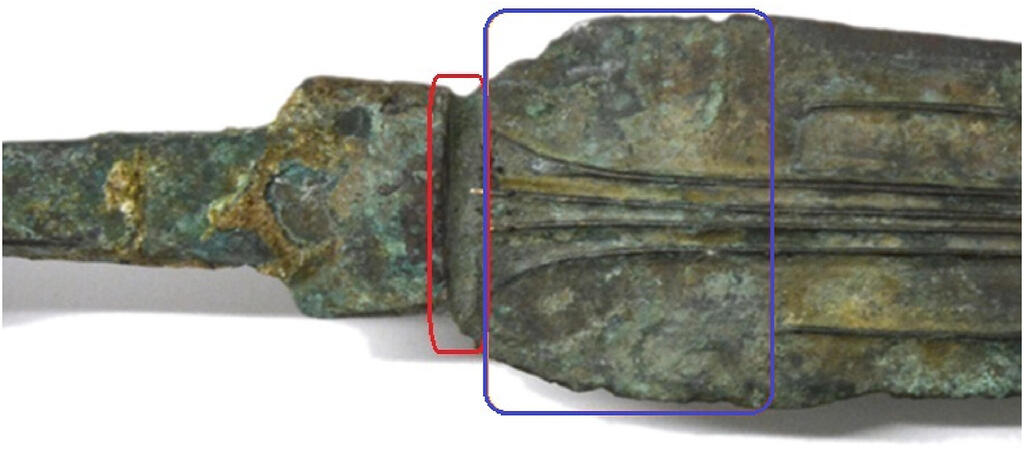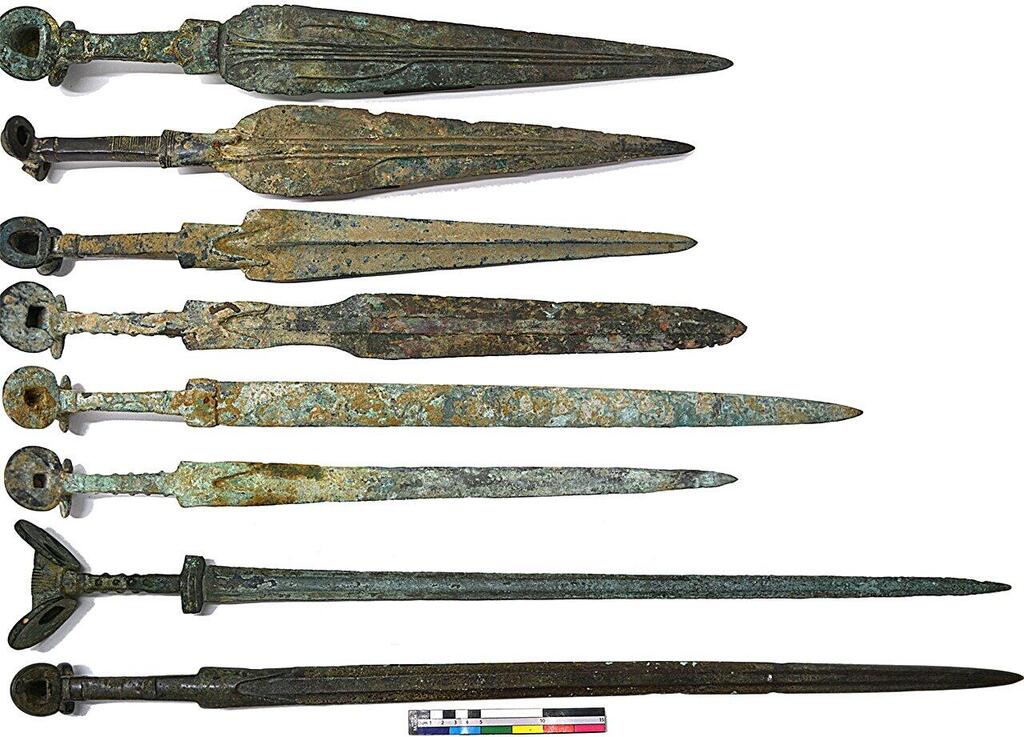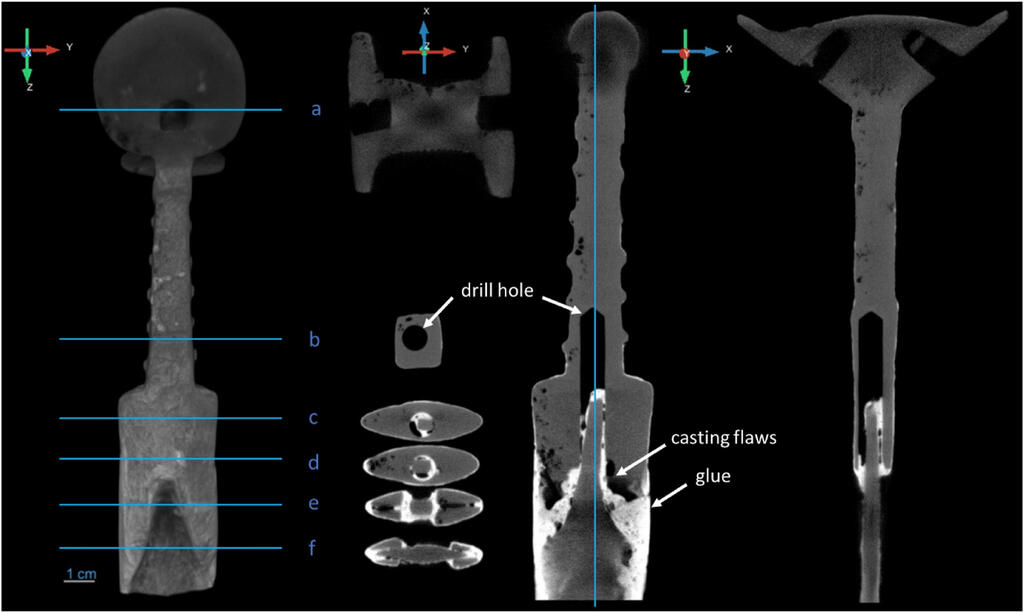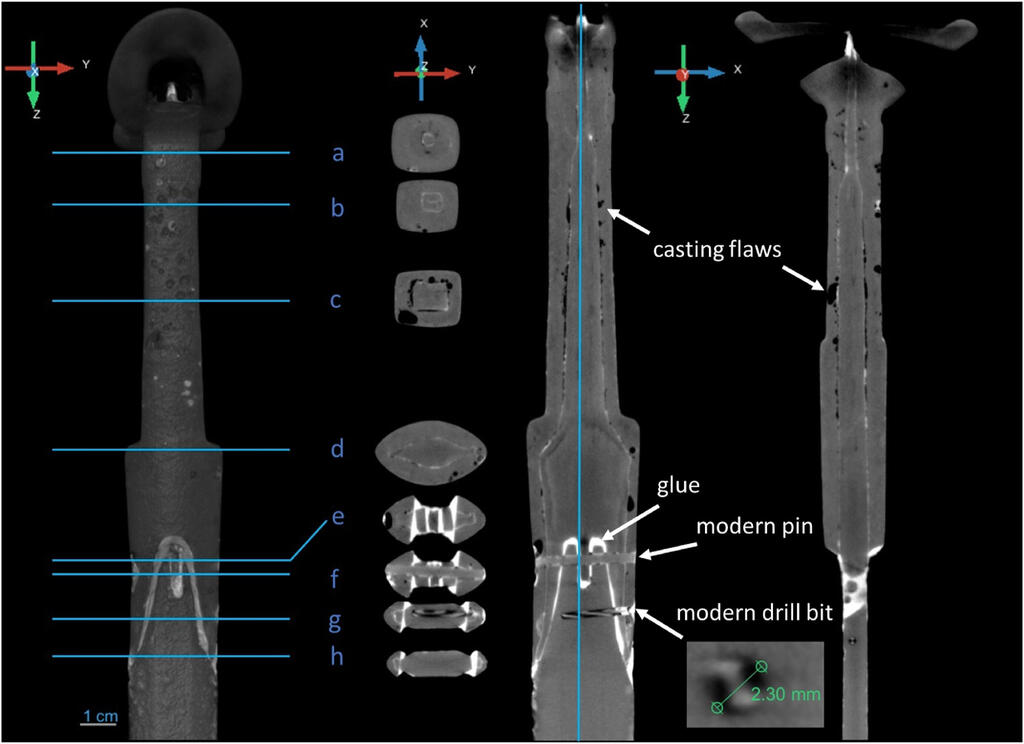A study published by the Journal of Archaeological Science - approved by Iranian authorities - utilizing neutron tomography, revealed that the composition of swords from the early Iron Age in Iran was altered, with bronze blades replacing the iron originals.
The blade swap masked the swords’ original composition and how they were crafted, solely to raise their value on the illegal antiquities market.
The study was conducted by a team from Cranfield University, ISIS Neutron, and Muon Source (run by the Science and Technology Facilities Council in Oxfordshire), and the British Museum, and utilized neutron tomography, a relatively uncommon technique in archaeology but one with distinct advantages over others, such as X-ray scanning. Neutron tomography is particularly effective in identifying organic materials, adhesives used to alter items, and material compositions in artifacts.
This innovative technique creates images based on how neutrons penetrate objects, revealing the internal structure of the eight swords. The analysis uncovered the use of adhesives and recent drilling, with one of the swords even containing a broken drill bit. Alex E. Rodzinka, an archaeology student at Cranfield University and part of the research team, emphasized that bi-metallic objects are vital for understanding the transition from bronze to iron, but illegal alterations, like those found in the study, make the task much more complex.
4 View gallery


One of the Iranian swords in which the iron blade was replaced with a bronze blade
(Photo: Journal of Archaeological Science)
Blades from the early Iron Age in Iran, are critical for understanding early metalworking technologies in a core region of the ancient Near East. However, illegal alterations and forgery of artifacts complicate efforts to trace the evolution of metalworking techniques from over 3,000 years ago. Accurately identifying these changes, as done in a recent study of eight swords from that era, is crucial not only for reconstructing advancements in metalworking but also for combating the illegal antiquities trade.
"The neutron tomography analysis exposed the true extent of modern modifications to ancient Iranian swords, including the replacement of iron blades with bronze ones," added Dr. Anna Fedrigo from the ISIS Neutron and Muon Source, who helped scan the swords.
"Iran has been a center of metallurgical innovation for millennia, though many aspects of these traditions remain unknown. Distinguishing ancient manufacturing techniques from modern forgery through advanced imaging techniques is a key step in studying the mechanical and chemical properties of metals, as well as metal extraction and processing methods," concluded Dr. Nathaniel Erb-Satullo, a senior lecturer in archaeology at Cranfield University.
Get the Ynetnews app on your smartphone:
Google Play: https://bit.ly/4eJ37pE
Apple App Store: https://bit.ly/3ZL7iNv




